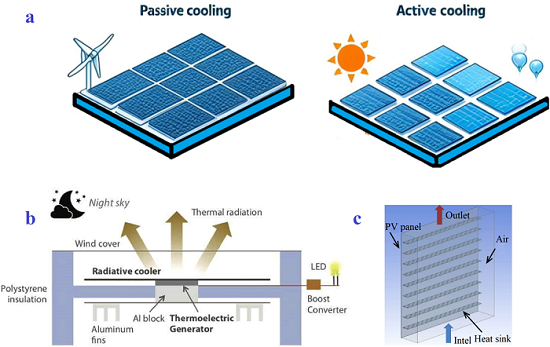As an engineer specializing in renewable energy systems, I have had the privilege of witnessing the rapid evolution of solar photovoltaic (PV) technology. However, the efficiency and longevity of these systems heavily depend on effective thermal management. This blog explores the critical role of heat sinks and cold plates in solar PV systems, their applications, and future trends.

Functions of Heat Sinks/Water-Cold Plates
The primary function of Heat Sinks and water-cooling plates in solar PV systems is to dissipate the heat generated by the photovoltaic cells during operation. When sunlight strikes a PV cell, it converts photons into electrons, thereby generating electricity. However, this conversion process is not entirely efficient; a significant portion of the absorbed solar energy is converted into heat. If left unchecked, this heat can lead to a decrease in cell performance, accelerated aging, and even
potential damage.
Heat Sinks, typically made of materials with high thermal conductivity such as aluminum or copper, efficiently transfer heat away from the PV cells via conduction, convection, and radiation. Water-cooling plates, on the other hand, utilize a closed-loop liquid cooling system to remove heat more effectively, especially in high-concentration PV systems where heat generation is more pronounced.

The Role of Heat Sinks and Cold Plates in Solar PV Systems
 Applications in Solar PV Systems
Applications in Solar PV Systems
Photovoltaic Panels: Heat sinks are commonly attached to the backside of PV panels to maintain optimal operating temperatures. This ensures higher energy conversion efficiency and prolonged panel lifespan.
Concentrated Photovoltaic (CPV) Systems: In CPV systems, where sunlight is focused onto small areas of high-efficiency PV cells, heat generation is significantly higher. Water-cooling plates are often employed to manage the intense heat, preventing thermal runaway and maintaining cell performance.
Solar Inverters: The electronics within solar inverters also generate heat during the process of converting DC power from PV panels into AC power for grid use. Heat sinks and, in some cases, water-cooling systems, are integrated into inverter designs to ensure reliable operation and prevent thermal shutdown.
Solar Thermal Systems: While primarily used for heating water, solar thermal collectors may also benefit from heat sink technology to dissipate any excess heat that could impair system performance.
Future Trends in Thermal Management for Solar PV Systems
As the global push for renewable energy continues to accelerate, the demand for efficient and reliable solar PV systems will only grow. This necessitates advancements in thermal management technologies. Here are some future trends to watch:
1. Advanced Materials
Enhanced Materials: The development of new materials with superior thermal conductivity and corrosion resistance will lead to more efficient heat sinks and water-cooling plates.
2. Integrated Cooling Solutions
Future solar PV systems may see more integrated cooling solutions, where heat sinks and cold plates are designed as part of the components themselves, rather than add-ons. This integration can improve thermal performance and reduce system complexity.
3. Smart Thermal Management
With the advent of IoT and smart technologies, thermal management systems can become more adaptive. Sensors and AI algorithms can monitor temperatures in real-time and adjust cooling mechanisms dynamically, optimizing performance and energy use.
4. Sustainability in Manufacturing
As the focus on sustainability grows, there is a push towards more eco-friendly manufacturing processes for heat sinks and cold plates. This includes using recyclable materials and reducing the carbon footprint during production.
The role of heat sinks and water-cooling plates in solar PV systems cannot be overstated. They are crucial for maintaining optimal operating temperatures, ensuring high energy conversion efficiencies, and prolonging the lifespan of PV components. As technology advances, we can expect to see even more innovative and efficient thermal management solutions entering the market, driving the adoption of solar energy and contributing to a cleaner, greener future.
Stay tuned for more updates on KINGKA latest advancements in solar PV technology and thermal management solutions!









 Applications in Solar PV Systems
Applications in Solar PV Systems